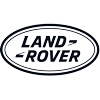 2010 Land Rover Freelander II (facelift 2010) Dimensions, Size & Specs
2010 Land Rover Freelander II (facelift 2010) Dimensions, Size & SpecsMeasurements of the 2010 Land Rover Freelander II, engineered for optimal performance and comfort
| Dimensions | |
|---|---|
| Length: | 4500 mm177.2 in14.8 ft |
| Width (Opened Mirrors): | 2195 mm86.4 in7.2 ft |
| Height: | 1740 mm68.5 in5.7 ft |
| Weight Specifications | |
| Curb Weight: | 1710-1805 kg3770-3979 lbs |
The Land Rover Freelander II facelift, produced between 2010 and 2012, represents a refined evolution of Land Rover's compact SUV offering. This generation comes with modern styling updates and enhanced features while maintaining the practicality and off-road capability that the Freelander line is known for. The 2010 facelift model measures 4500 mm (177.2 inches) in length, making it a competitive choice in the compact SUV segment. Its width, measured with mirrors opened, is 2195 mm (86.4 inches), allowing for a spacious cabin without sacrificing maneuverability. With a height of 1740 mm (68.5 inches), it offers a commanding driving position, typical for SUVs, granting excellent road visibility. The curb weight ranges from 1710 to 1805 kg (3760 to 3978 lbs), reflecting robust build quality and accommodating various powertrain options. The Freelander II's dimensions provide a balanced footprint for urban driving and outdoor adventures alike. Its size positions it against other compact SUVs, offering a blend of interior space, road presence, and off-road robustness. Overall, the 2010 Land Rover Freelander II facelift exemplifies a versatile SUV that combines British engineering with practical dimensions suited to a variety of driving environments.
Discover the standout features that make the 2010 Land Rover Freelander II a leader in its class
Have a question? Please check our knowledgebase first.
The Land Rover Freelander II facelift 2010 measures 4500 mm (177.2 inches) in length, 2195 mm (86.4 inches) in width with mirrors opened, and stands 1740 mm (68.5 inches) tall. These compact dimensions characterize its SUV design, combining maneuverability with ample interior space.
At 2195 mm (86.4 inches) wide with mirrors unfolded, the Freelander II facelift is relatively wide compared to many compact SUVs, which affects parking and maneuvering in urban environments. This width provides good stability on the road but requires careful navigation in narrow parking spots or tight city streets. Folding mirrors help reduce width to ease ingress and egress in confined spaces, enhancing convenience without sacrificing visibility.
While precise ground clearance varies by trim, the height of 1740 mm (68.5 inches) reflects the Freelander II's SUV stature, contributing to a commanding driving position and good off-road capabilities. The height supports a comfortable interior headroom and visibility, while also providing enough clearance for light off-roading, though its main focus is on-road comfort and versatility.
The Freelander II facelift has a curb weight ranging between 1710 kg to 1805 kg (approximately 3769 to 3977 lbs). This mid-range weight for a compact SUV offers a balance between stability and agility. The weight impacts fuel economy, handling, and acceleration; heavier vehicles tend to feel more stable but less nimble, while also consuming more fuel, with Land Rover tuning the Freelander to provide a good all-around driving experience.
Standard garages typically measure at least 2400 mm (94.5 inches) wide and 4800 mm (189 inches) deep. With the Freelander II being 4500 mm (177.2 inches) long and 2195 mm (86.4 inches) wide including mirrors, it fits comfortably in length. Width-wise, the vehicle is narrow enough to fit within the garage’s width, although folding the mirrors is recommended for easier clearance. Height at 1740 mm (68.5 inches) poses no issue for standard garages.
Compared to the Freelander I, the Freelander II facelift 2010 is generally longer and wider, providing more interior space and improved road presence. The Freelander I was shorter and narrower, which made it slightly more maneuverable in tight spots but less spacious inside. The facelift version improved on comfort and design while maintaining compact SUV practicality with enhanced modern styling and features.
The Freelander II facelift sits comfortably within the compact SUV segment, with its 4500 mm (177.2 inches) length placing it somewhat on the larger side compared to rivals like the Toyota RAV4 or Honda CR-V. Its width of 2195 mm (86.4 inches) inclusive of mirrors is also wider than many competitors. These dimensions contribute to a spacious cabin and a robust road presence but may make urban driving and parking slightly more challenging compared to smaller SUVs.
The Freelander II facelift offers a well-designed interior with good headroom and legroom thanks to its 1740 mm (68.5 inches) height and extended length of 4500 mm (177.2 inches). Passenger comfort is prioritized with supportive seats and ample space for adults in both front and rear seats. Cargo capacity is competitive for the segment, with rear seats that can fold to increase storage space, making it versatile for commuting as well as light recreational use.
The somewhat larger dimensions and curb weight of the Freelander II facelift contribute to modest fuel efficiency compared to smaller SUVs. While its 4500 mm length and 1710-1805 kg weight add stability and comfort, they also slightly increase aerodynamic drag and fuel consumption. However, Land Rover balances practicality with performance, offering a reliable off-road-capable vehicle that remains practical for daily driving, with decent fuel consumption relative to its size and capabilities.
The Freelander II facelift 2010 was available with various engine choices including petrol and diesel variants, designed to deliver a balance between power and efficiency. It featured Land Rover’s Terrain Response system, enabling better handling on diverse surfaces. Other features included modern infotainment, safety systems, and luxury touches typical of the brand, appealing to buyers seeking a premium compact SUV with off-road capability and refined driving dynamics.
